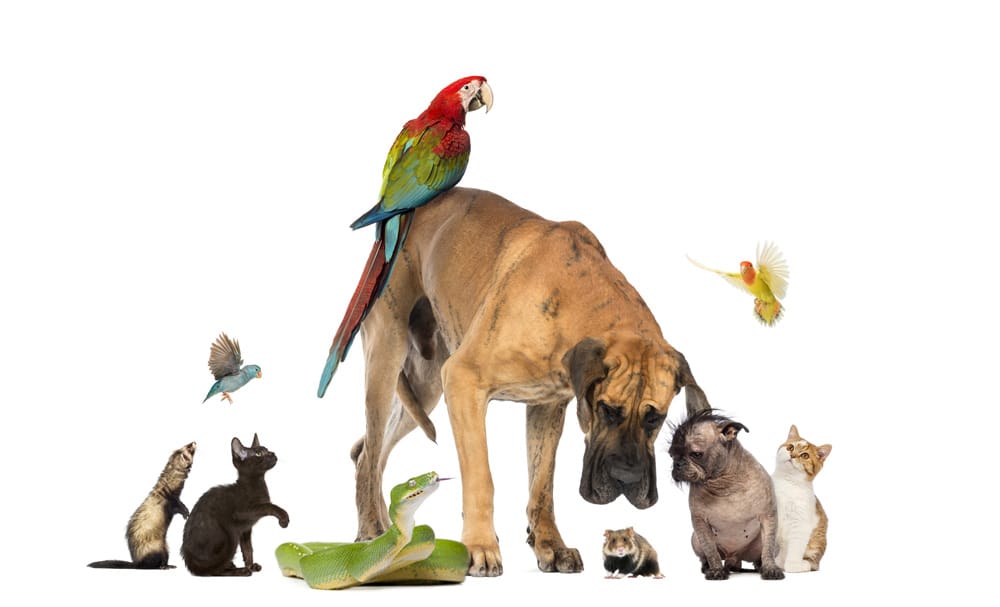
The pet category in the U.S. is a $109 billion industry that has more than doubled in the past ten years. This phenomenal growth is directly related to pet lovers’ emotional connection with dogs, cats, and other animals in their care. The American Pet Products Association (APPA) reports pet ownership is at the highest level on record, with almost 67 percent of U.S. households owning at least one pet.
- 45% of pet owners spend the same amount or more on their pet’s healthcare costs than they spend for themselves
- Dog ownership costs about $1,641 per year vs. $1,125 for cats
- Fish are the most affordable pets to care for at around $360 annually
For home improvement retailers operating a pet department can be a booming niche business. It gives owners the option to sell a wide variety of pet food, treats, and innovative toys that can appeal to a diverse target audience—everyone from Gen Z to Baby Boomers. However, it is a particularly effective way to attract millennial pet owners—fifty percent of whom buy pet gifts every month.
Category Withstands economic-downturns
Unlike other industries, the economy has minimal impact on the pet category. Pet parents will continue feeding their pets and take them to the veterinarian even during the pandemic. Statistics indicate that 60 percent of cats and 56 percent of dogs in the U.S. are overweight. Sells of high-quality premium pet food continues to generate significant profits for retailers.
Good Profit Margins
Organic and gourmet pet foods can have profit margins as high as 40 percent. Popular chewing toys and bones are even higher at around 70 percent. Pet food accounts for 75 percent of all pet industry sales. Although the category is dominated by big companies such as Mars Petcare and Purina, smaller players like Blue Buffalo have a significant impact on consumers’ purchasing decisions.
Demand is Seasonless
Selling pet food, treats and accessories are always in season. There’s no need to limit cash flow several weeks a year or estimate future demand. Although the pet industry peaks in December around the holiday season, the demand is relatively steady throughout the year. This makes it easier to manage inventory and incorporate long-term planning.
New Products are Easy to Sell
Pet owners are eager to try new products that can benefit their beloved family members. Most new products introduced in the pet industry are self-explanatory and do not require a hard sell to close the deal. Owners actively engage in learning more about items that promote health, entertainment, and training. By the time most people visit a store, they have all of the information they need to make an informed purchase.
The Market Keeps Growing
The great news for retailers who sell pet products is the market keeps growing. Pet owners are buying both in physical stores and online. Ecommerce pet sales increased 51 percent in March 2020. By the end of the year, sales were estimated at $13.5 billion. The three reasons people give for shopping online are price, selection, and convenience. Retailers who operate physical stores and have an online presence will have even more opportunities to sell products and engage their customers.
The American Pet Products Association provides the following breakdown of the estimated $109 billion U.S pet industry for 2021.
- Pet Food & Treats: $44.1 billion
- Supplies, Live Animals & OTC Medicine: $23.4 billion
- Vet Care & Product Sales: $32.3 billion
- Other Services: $9.7 billion
New and Innovate Products
Traditionally, this category was limited to food, treats, beds, leashes, and grooming products. However, there are now more options due to innovations offered by entrepreneurs and emerging companies. According to Grand View Research, pet supplement sales will hit $1 billion by 2027. These include dog vitamins—catfish oil and probiotics—with CBD being the fastest-growing category. The spike in CBD sales most likely has to do with early research that shows the oil may help treat canine osteoarthritis, a condition that afflicts 20 percent of dogs more than a year old. Other products include pet wipes, cat toothpaste, and battery-operated, wi-fi-connected litterboxes.
Retailers who are not currently selling pet products but plan to get into the business should start small and identify the best products to sell in their particular market. Offer shoppers products that are not typically found at the grocery store or big-box retailers. Remember, owners, love their pets and are willing to spend more on quality products. Please do your research and conduct a brief survey to ask customers about the products they currently purchase. In the case of the pet category, it pays to be different from your competitors.




